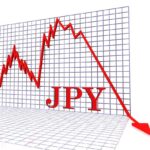Australian Dollar under pressure following the mixed Producer Price Index data issued on Friday.
The Australian Dollar (AUD) remains weak against the US Dollar (USD) after two days of advances, as Australia’s mixed Producer Price Index (PPI) data for the third quarter issued on Friday. However, predictions of a hawkish stance by the Reserve Bank of Australia (RBA) continue to underpin the Australian Dollar, limiting losses in the Austrakian Dollar pair.
Australia’s Producer Price Index increased by 0.9%.Quarter-on-quarter in Q3, following a 1.0% gain in the previous period and above market expectations of a 0.7% growth. This is the seventeenth consecutive period of producer inflation. Annual PPI growth decreased to 3.9% in Q3, compared to 4.8% in the previous quarter.
China’s Caixin Manufacturing PMI increased to 50.3 in October, up from 49.3 in September and above the projected 49.7 level.
China’s Caixin Manufacturing Purchasing Managers Index (PMI) rose to 50.3 in October, up from 49.3 in September, and beyond market estimates of 49.7. China a crucial trade partner for Australia, therefore changes in the Chinese economy could have a significant impact on Australian markets.
The US Dollar (USD) weakened following the announcement of Personal Consumption Expenditures (PCE) – Price Index data on Thursday. However, the USD’s fall would be constrained due to the current market caution amid uncertainties ahead of the upcoming United States presidential election.
Traders are waiting for the Nonfarm Payrolls (NFP) report, which is scheduled for release on Friday. The US economy predicted to add 113,000 jobs in October, while the unemployment rate remains constant at 4.1%.
Daily Market Movers: Australian Dollar faces problems following PPI and China PMI.
The US Personal Consumption Expenditures (PCE) Price Index showed that core inflation increased by 2.7% year on year in September. Additionally, initial jobless claims fell to a five-month low of 216,000 for the week ending October 25, indicating a strong labor market and lowering expectations for immediate Federal Reserve rate reduction.
In September, seasonally adjusted Australian retail sales increased by 0.1% month on month, falling short of the predicted 0.3% and substantially down. Compared to the prior month’s 0.7% rise. Retail Sales rose 0.5% in Q3, following a 0.3% dip in the previous quarter.
China’s NBS Non-Manufacturing PMI increased to 50.2 in October, up from 50.0 the previous month but somewhat lower than market estimates of 50.4. Meanwhile, the NBS Manufacturing PMI improved to 50.1 from 49.8, slightly exceeding the expectation of 50.0.
The US Gross Domestic Product (GDP) increased by 2.8% on an annualized basis in Q3, falling short of the 3.0% in Q2 and the 3.0% projection. According to the ADP Employment Change report, 233,000 new jobs were created in October, the highest rise since July 2023. This followed an upward revision of 159,000 in September and substantially exceeded Estimates of 115,000.
Australian Bureau of Statistics, the Consumer Price Index (CPI) increased by only 0.2% quarter on quarter in the third quarter.
According to the Australian Bureau of Statistics, the Consumer Price Index (CPI) increased by only 0.2% quarter on quarter in the third quarter, down from 1.0% the previous quarter and significantly lower than the expected 0.3%. In September, the monthly CPI increased by 2.1% year on year, falling short of market expectations of 2.3% and lower than August’s reading of 2.7%.
On Tuesday, the US Bureau of Labor Statistics (BLS) reported that JOLTS Job Openings were 7.443 million in September, down from 7.861 million in August and falling short of the market forecast of 7.99 million.
The Reserve Bank of Australia said that the current cash rate of 4.35% is sufficiently restrictive to return inflation to the target range of 2%-3% while maintaining employment. As a result, rate cuts in November appear unlikely.
The ANZ-Roy Morgan Australia Consumer Confidence Index fell to 86.4 this week, down from 87.5 the previous week.
https://voiceoftraders.com/analysis/gold-price-attracts-some-buyers-ahead-of-the-us-nfp-data









